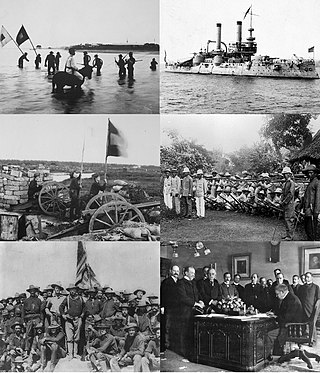
The Spanish–American War was fought between Spain and the United States in 1898. It began with the sinking of the USS Maine in Havana Harbor in Cuba, and resulted in the U.S. acquisitions of Puerto Rico, Guam, and the Philippines, and its domination of Cuba. It represented U.S. intervention in the Cuban War of Independence and Philippine Revolution, with the latter later leading to the Philippine–American War. The Spanish–American War brought an end to almost four centuries of Spanish presence in the Americas, Asia, and the Pacific; the United States meanwhile not only became a major world power, but also gained several island possessions spanning the globe, which provoked rancorous debate over the wisdom of expansionism.

William Kreutzmann Jr. is an American drummer and founding member of the rock band Grateful Dead. He played with the band for its entire thirty-year career, usually alongside fellow drummer Mickey Hart, and has continued to perform with former members of the Grateful Dead in various lineups, and with his own bands BK3, 7 Walkers and Billy & the Kids.
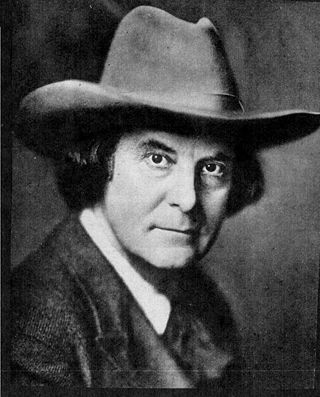
Elbert Green Hubbard was an American writer, publisher, artist, and philosopher. Raised in Hudson, Illinois, he had early success as a traveling salesman for the Larkin Soap Company. Hubbard is known best as the founder of the Roycroft artisan community in East Aurora, New York, an influential exponent of the Arts and Crafts movement.

Noteworthy events of Guantánamo Bay.

Calixto García Íñiguez was a Cuban general in three Cuban uprisings, part of the Cuban War for Independence: the Ten Years' War, the Little War, and the War of 1895, itself sometimes called the Cuban War for Independence, which bled into the Spanish–American War, ultimately resulting in national independence for Cuba.

Henry Ware Lawton was a U.S. Army officer who served with distinction in the Civil War, the Apache Wars, and the Spanish–American War. He received the Medal of Honor for heroism during the American Civil War. He was the only U.S. general officer to be killed during the Philippine–American War and the first general officer of the United States killed in overseas action. The city of Lawton, Oklahoma, takes its name from General Lawton, as does a borough in the city of Havana, Cuba. Liwasang Bonifacio in downtown Manila was formerly named Plaza Lawton in his honor.
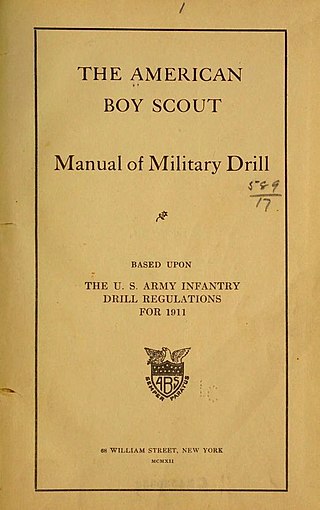
The American Boy Scouts (ABS), later the United States Boy Scouts, was an early American Scouting organization formed by William Randolph Hearst in 1910, following on from the formation of the Scouting movement by Robert Baden-Powell between 1903 and 1907. Near the end of its existence, the organization also used the names American Cadets and U.S. Junior Military Forces.

Roycroft was a reformist community of craft workers and artists which formed part of the Arts and Crafts movement in the United States. Elbert Hubbard founded the community in 1895, in the village of East Aurora, New York, near Buffalo. Participants were known as Roycrofters. The work and philosophy of the group, often referred to as the Roycroft movement, had a strong influence on the development of American architecture and design in the early 20th century.

The Cuban War of Independence, also known in Cuba as the Necessary War, fought from 1895 to 1898, was the last of three liberation wars that Cuba fought against Spain, the other two being the Ten Years' War (1868–1878) and the Little War (1879–1880). The final three months of the conflict escalated to become the Spanish–American War, with United States forces being deployed in Cuba, Puerto Rico, and the Philippine Islands against Spain. Historians disagree as to the extent that United States officials were motivated to intervene for humanitarian reasons but agree that yellow journalism exaggerated atrocities attributed to Spanish forces against Cuban civilians.

James Edward West was a lawyer and an advocate of children's rights, who became the first professional Executive Secretary, soon renamed Chief Scout Executive, of the Boy Scouts of America (BSA), serving from 1911 to 1943. Upon his retirement from the BSA, West was given the title of Chief Scout.
The Davidsbündler was a music society created by German Romantic composer Robert Schumann in his writings. It was inspired by literary societies, real and imagined ones, such as the Serapionsbrüder of ETA Hoffmann, however as Richard Taruskin noted, the concept was most realized in Schumann's reviews of his fellow composers and their aesthetic styles. The illusory group was created to defend the cause of contemporary music against its detractors to whom Schumann routinely called philistine.

The Hubbard House is a historic home in Hudson, Illinois, one of two houses on the list of United States Registered Historic Places. The other one, located along the same street, was the Gildersleeve House. The Hubbard House is significant as the boyhood home of American writer and philosopher Elbert Hubbard. Hubbard lived in Hudson and attended school there; he stayed in the village until he was 16. The original wing of the house was built in 1857 by a doctor from Buffalo, New York, Silas Hubbard. In 1872 the two-story section of the house was constructed in a typical I-house design. The home has been listed on the National Register of Historic Places since 1979.

The presidency of William McKinley began on March 4, 1897, when William McKinley was inaugurated and ended September 14, 1901, upon his assassination. A longtime Republican, McKinley is best known for conducting the successful Spanish–American War (1898), freeing Cuba from Spain; taking ownership of the Republic of Hawaii; and purchasing the Philippines, Guam and Puerto Rico. It includes the 1897 Dingley Tariff which raised rates to protect manufacturers and factory workers from foreign competition, and the Gold Standard Act of 1900 that rejected free silver inflationary proposals. Rapid economic growth and a decline in labor conflict marked the presidency and he was easily reelected. He was succeeded by Vice President Theodore Roosevelt following his death.

Andrew Summers Rowan was born in Gap Mills, Virginia, the son of John M. Rowan and Virginia Summers. He was an American army officer who served in the Spanish–American War, the Philippine War, and the Moro Rebellion, and became famous for reportedly delivering a message to Gen. Calixto Garcia in Cuba.

Felix Flying Hawk (1881–1944) was an Oglala Lakota Wild Wester, interpreter, photographer and rancher. Felix Flying Hawk was the only son of Chief Flying Hawk and Goes Out Looking. "The Story of Felix Flying Hawk: Rustler Victim" was published by Major Israel McCreight in 1943 about an Indian arrested for stealing his own horses and attesting to the honesty and integrity of Native Americans. Felix Flying Hawk's eldest son, David Flying Hawk, traveled with his grandfather Chief Flying Hawk as a performer with Wild West shows.

A Message to Garcia is a 1936 American adventure spy film directed by George Marshall and starring Wallace Beery, Barbara Stanwyck and John Boles. The film is inspired by the 1899 essay "A Message to Garcia" by Elbert Hubbard, loosely based on an incident during the ramp up to the Spanish–American War. The essay had previously been made into a 1916 silent film, also called A Message to Garcia. In the story, U.S. Army Lieutenant Rowan, under cover, carries a secret message from President McKinley to General García, the leader of a rebellion against Spanish rule on the island of Cuba.

José Quintín Bandera Betancourt was a military leader of the Cuban insurrection against the Spanish during the Cuban War of Independence. In 1906, Bandera, led an army of insurgents toward Havana, and was killed near Punta Brava, a village close to Havana.
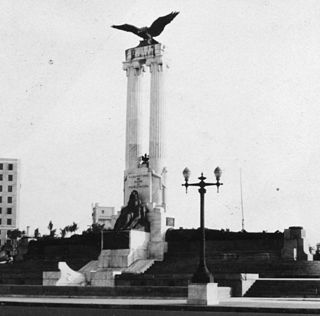
The Monument to the Victims of the USS Maine was built in 1925 on the Malecón boulevard at the end of Línea Calle, in the Vedado neighborhood of Havana, Cuba.
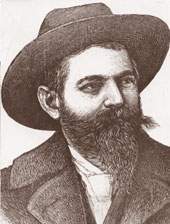
Enrique Collazo Tejada was a Cuban writer, army general, and distinguished veteran of the Ten Years' War and War of Independence.

Carlos García Vélez was a Cuban dental surgeon and army general during the Cuban War of Independence and Spanish–American War.




















